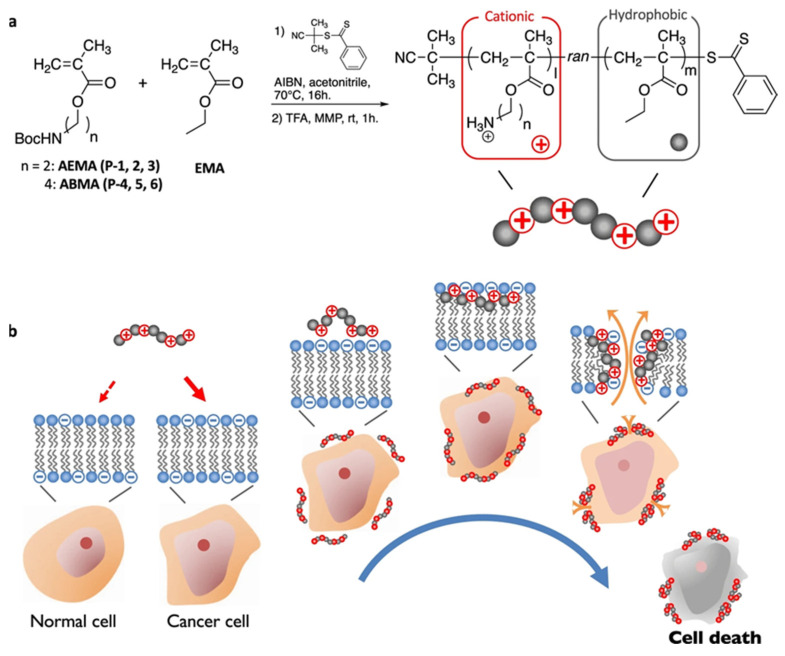Figure 4.
(a) Synthesis of methacrylate random copolymers with cationic and hydrophobic side chains. (b) The mechanism of prepared cationic polymers to destroy the cell membrane. Through electrostatic interaction, cationic anticancer peptides (ACPs) selectively bind to the cell membrane of PS-rich anionic cancer cells. The bound ACPs insert the hydrophobic domain of the spiral into the cell membrane, causing the cell membrane to rupture, leakage of cell components, and ultimately the death of cancer cells. Adapted from [71].

